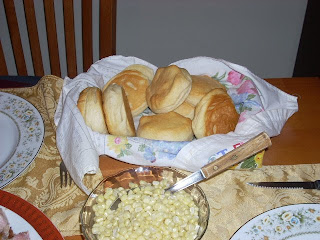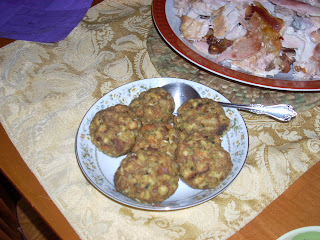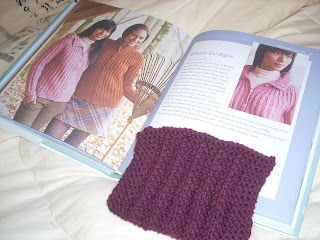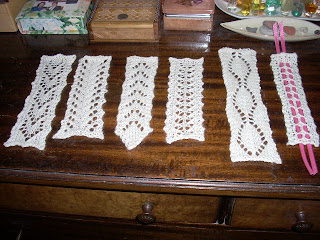I was knitting Ingenue, a top down sweater in the round, using, as advised, 24” needles which made it easy to knit the traditional in-the-round method. (http://www.ravelry.com/patterns/library/ingenue)
One of the selling points of knitting top down in the round is that you can try the sweater on as you go. Except that in order to do that, you have to slip all the stitches onto waste yarn, try it on, and then slip all the stitches back onto the needle again, (because the needle is always going to be smaller than the actual dimensions of the item being knit.) So that’s do-able, but a waste of good knitting time.
When I got near the bottom edge of the sweater, I decided to put the whole thing on a spare Knitpicks cord and knit the sleeves first before deciding on the exact length of the body. I used a 60” cord, for a 40” sweater. And as I knit the sleeves, I was able to try it on without fiddling around with putting the stitches onto waste yarn, since the cord was plenty long.
So it came time to re-attach the needles to the cord on the body, and I figured, ok, I’ll just keep this 60” cord in here and do the seed stitch border at the bottom by magic loop. That way, I could try it on without moving stitches. And that was good.
But at some point, instead of having the cord arranged Mickey Mouse style, with half the stitches in the front and half in the back and a loop coming out on the left and another length of cord on the right to knit with–I pulled all the cord to the right side in back. So now I had all the stitches in one circle, and a lot of excess cord on the right-hand side, and I was able to knit the entire round without turning and re-arranging stitches at all. Just knit from beginning of round to end of round in one smooth motion. And then pull the cord all the way to the right again, positioned the stitches near the tip of the left-hand needle, and off I went.
So I began puzzling about this! I had seen tutorials about how to finish up a hat without resorting to dpns, by using a single loop variant of magic loop. Is this the same thing as that? And most importantly, will this method work on socks and sleeves and hats and entire sweaters? And would it work using the same length needle that most of us have been using for magic loop all along? Is this an improvement to magic loop, or does it have some other drawbacks that I’m not seeing?
I posted these questions on Ravelry, and it was confirmed that this is a known and valid way of doing Magic Loop, by none other than TECHknitter, as well as a couple of other experienced knitters.
I saw a tutorial that explains this method, but somehow I didn’t see the beauty of it until I accidently unvented it again myself!
I have not been able to find a video tutorial, and unfortunately, I do not have the technological skill to create one. So here’s a verbal description. So let’s imagine that you have a sweater on a typical ML set-up, and you’re at the end of one section. Hold the knitting as you usually would to begin the next side, with two needles hanging out on the right side and a loop sticking out on the left, yarn coming from the back needle. Now pull on that back needle, pull so that the loop is eliminated and you have a long cord and needle coming out from the back. Slide the stitches into knitting position on the front needle.
Now look: you have stitches ready to knit, you have a needle available to knit onto, and you have enough cord to move easily…and you have all the stitches in one neat circle.
So start knitting, and keep knitting until all the stitches have been knit! Then repeat the instructions above again. The picture tutorial for Traveling Loop mentioned above says that the loop moves and that it knows where to go. But actually, you are just knitting all the way around, and the loop isn’t really “moving.”
I haven’t tried casting on and doing this from the start, but it seems that it would work. But you could start as you are used to and then after a few rounds are done, pull and eliminate the left hand loop and keep right on going.
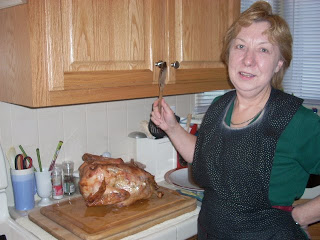
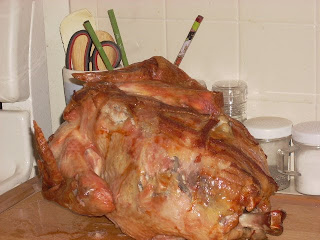 hahaha, no there were NOT chopsticks sticking out of the turkey. Don't you hate the way photography flattens things out and makes you look like you have a lampshade on your head?
hahaha, no there were NOT chopsticks sticking out of the turkey. Don't you hate the way photography flattens things out and makes you look like you have a lampshade on your head?